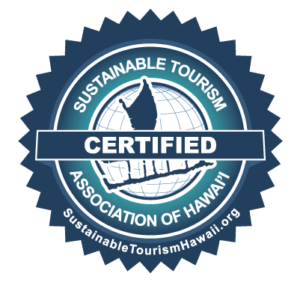Our mission at Hawaiian Paddle Sports involves more than just our business. Community, culture, and protecting what we love in this world is a big part of who we are. Each month we highlight a local charity, community group or non profit organization to help raise awareness for their cause. In addition to raising awareness, we make a financial donation and volunteer our time to help them to accomplish their goals. We are proud to support Leeward Haleakala Watershed Restoration Partnership.
Leeward Haleakala Watershed Restoration Partnership: Protecting Maui’s Treasures
Formed in 2003, the Leeward Haleakala Watershed Restoration Partnership (LHWRP) is a coalition of 12 private and public landowners and supporting agencies. The coalition covers 43,175-acres along Haleakala’s leeward slopes. The partnership focuses on restoring dryland forests from Makawao through ‘Ulupalakua to Kaupo between 3,500 and 6,500 feet elevation.
What is a Watershed?
Watersheds are areas that collect and drain rainwater. They can be as small as a footprint or as large as a mountain valley. Water flows through the watershed and empties into a outlet, typically a large water body like an ocean, lake, or wetland.
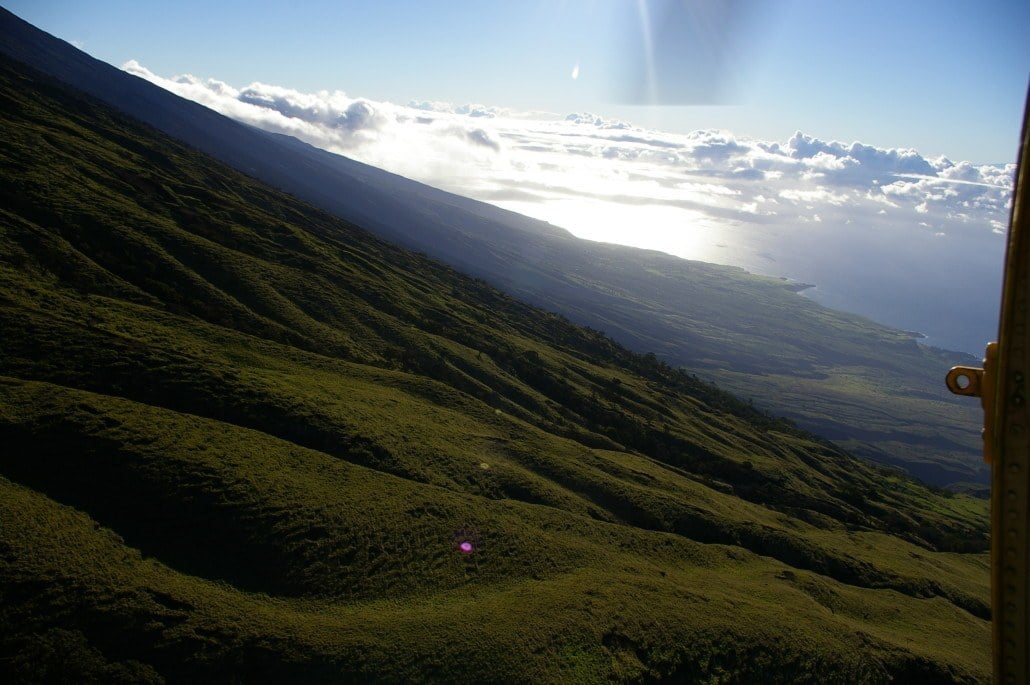
PC: Hawaii Association of Watershed Partnerships
Watersheds are critical to healthy ecosystems and serve important functions for humans, plants, and animals. We rely on watersheds to supply our drinking water, in addition to water for agriculture and manufacturing. Watersheds also provide recreation opportunities, and activities like canoeing, fishing, or cooling off in a stream would all be impossible if it weren’t for watersheds. Numerous plants and animals furthermore rely on watersheds to provide habitat.
Once rain has fallen in the watershed, much of it is soaked up by the soil (similar to a sponge). If the soil becomes too saturated, the water will runoff over the surface of the land. Known as surface runoff, this water carries soil, nutrients, and any pollutants downhill. Rainfall can also evaporate back into the atmosphere or be taken up by trees and plants.
Watersheds are Tied to Life in Hawaii
Native Hawaiians were closely tied the land, and Hawaiians took great measures to practice sustainable and responsible stewardship of the watershed. The ahupua‘a is the Hawaiian equivalent of a watershed. A form of land division, an ahupua‘a usually ran from the top of the mountain out to the reef. The ahupua‘a was typically divided into 3 separate areas: mountains, plains, and the ocean. Within each area, Hawaiians would fish or raise crops. Trade and barter would then take place between the communities that were near the sea and those higher in the mountains.
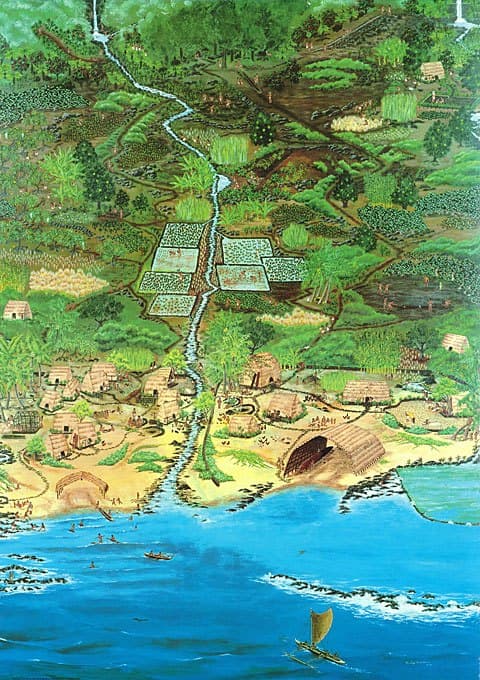
PC: Kupu Hawaii
Challenges and Threats to Hawaii’s Native Ecosystem
Prior to the arrival of Europeans, Haleakala’s leeward flanks were covered in extensive stands of koa, ohia,and other native trees. Unfortunately, much of these forests have been severely reduced in the past 200 years. Direct deforestation was responsible for removing many of the old growth trees. Today, feral ungulates, including axis deer, pigs, cows, and goats, continue to overgraze the already depleted forest, which destroys ground cover and stunts new tree growth. Without competition, invasive weeds are able to quickly invade. Today, less than 10% of leeward Haleakala’s native forest remains.
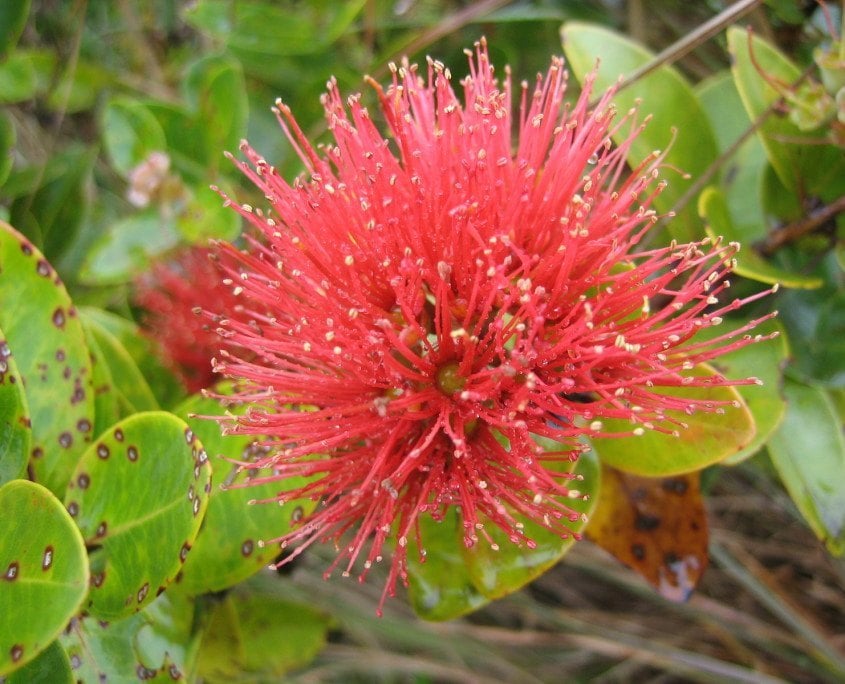
Loss of native forests is not only a detriment to animal and plant species, but has also impacted the region’s hydrology. Without large root systems to stabilize the soil, the area has lost an estimated 5-8 of topsoil, in addition to leaf litter and other organic material. Native plants are not able to thrive, and the once dense forest is transformed into a bare mountainside.
Restoring Haleakala’s Watershed
Leeward Haleakala Watershed Restoration Partnership seeks to minimize these threats through a variety of restoration projects and programs. One of the highest priorities is to protect existing native forests, a feat which is accomplished through an extensive network of fencing. At the Kahikinui site, partners have installed 19.6 miles of ungulate-proof fencing, which will protect over 7,300 acres of native watershed from overgrazing.
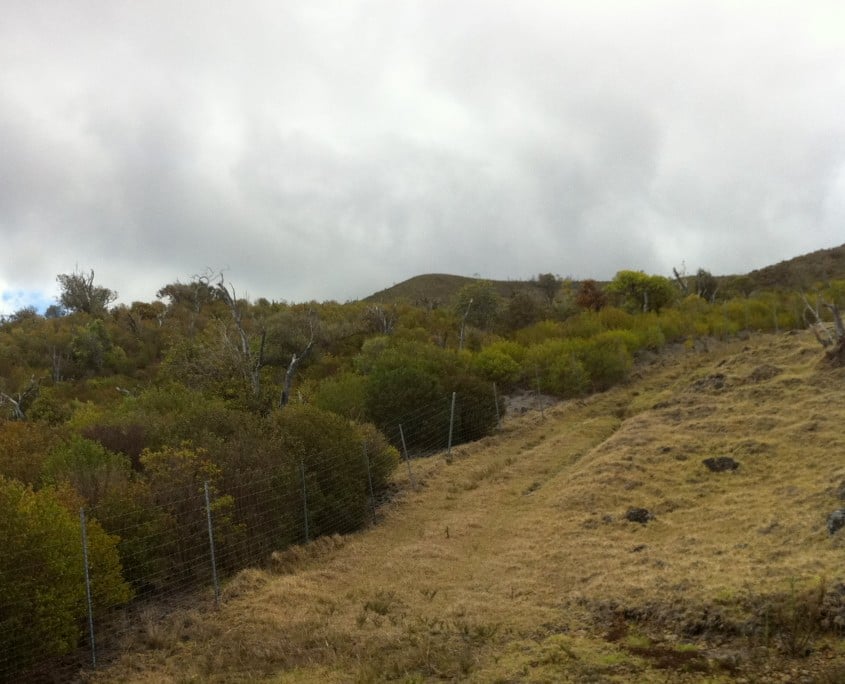
Ungulate-proof fence separating native forest (left) and degraded grazing land (right). PC: Ohana Magic https://ohanamagic.wordpress.com/2012/08/27/auwahi-forest-restoration/
Once fencing is complete, Leeward Haleakala Watershed Restoration Partnershipthen focuses its efforts on reforestation. The organization plants, maps, and surveys native plant species over hundreds of acres. Working with partner organizations, Leeward Haleakala Watershed Restoration Partnershiphas planted over 120,000 native seedlings in the Auwahi Forest and over 2,000 koa trees at the Puu Makua cinder cone site. These reforestation projects are also important to providing critical habitat for some of Hawaii’s most endangered bird species.
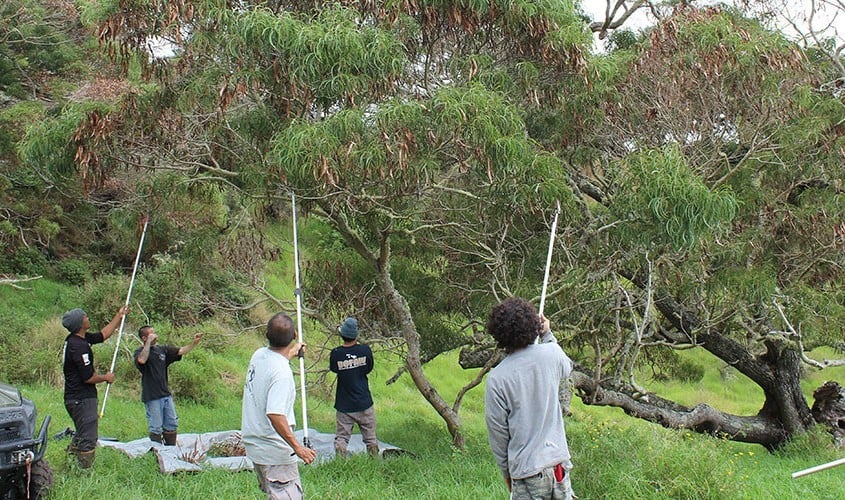
PC: Leeward Haleakala Watershed Restoration Partnership
Public outreach and education are another critical component of restoring Haleakala’s watershed health.As of 2015, Leeward Haleakala Watershed Restoration Partnership has launched an extensive public outreach campaign designed to educate the public about the importance of sustainable watershed management. LHWRP also encourages public involvement and seeks to develop a community of watershed stewards.
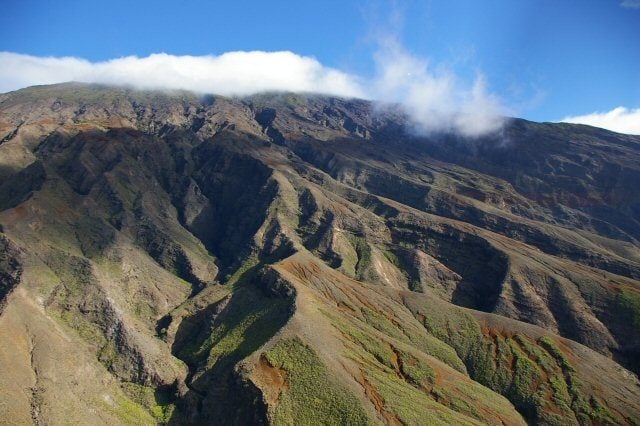
How You Can Help
Leeward Haleakala’s watersheds are in critical need of the continued support that is provided by LHWRP. As a concerned citizen, you can get involved to promote LHWRP projects:
- There are a number of volunteer opportunities for those who are interested in planting native seedlings, removing invasive plant species, collecting native seeds, and supporting restoration research.
- It’s easy to become a watershed steward – just follow LHWRP’s stewardship tips! For example, conserve water by monitoring your water use and utilize native species for landscaping.
- Monetary donations also help LHWRP purchase supplies, maintain field crews, and support ongoing restoration activities.
For more information on Leeward Haleakala Watershed Restoration Partnership, visit their website or “Like” them on Facebook. To participate in planting and other stewardship events, email [email protected].




